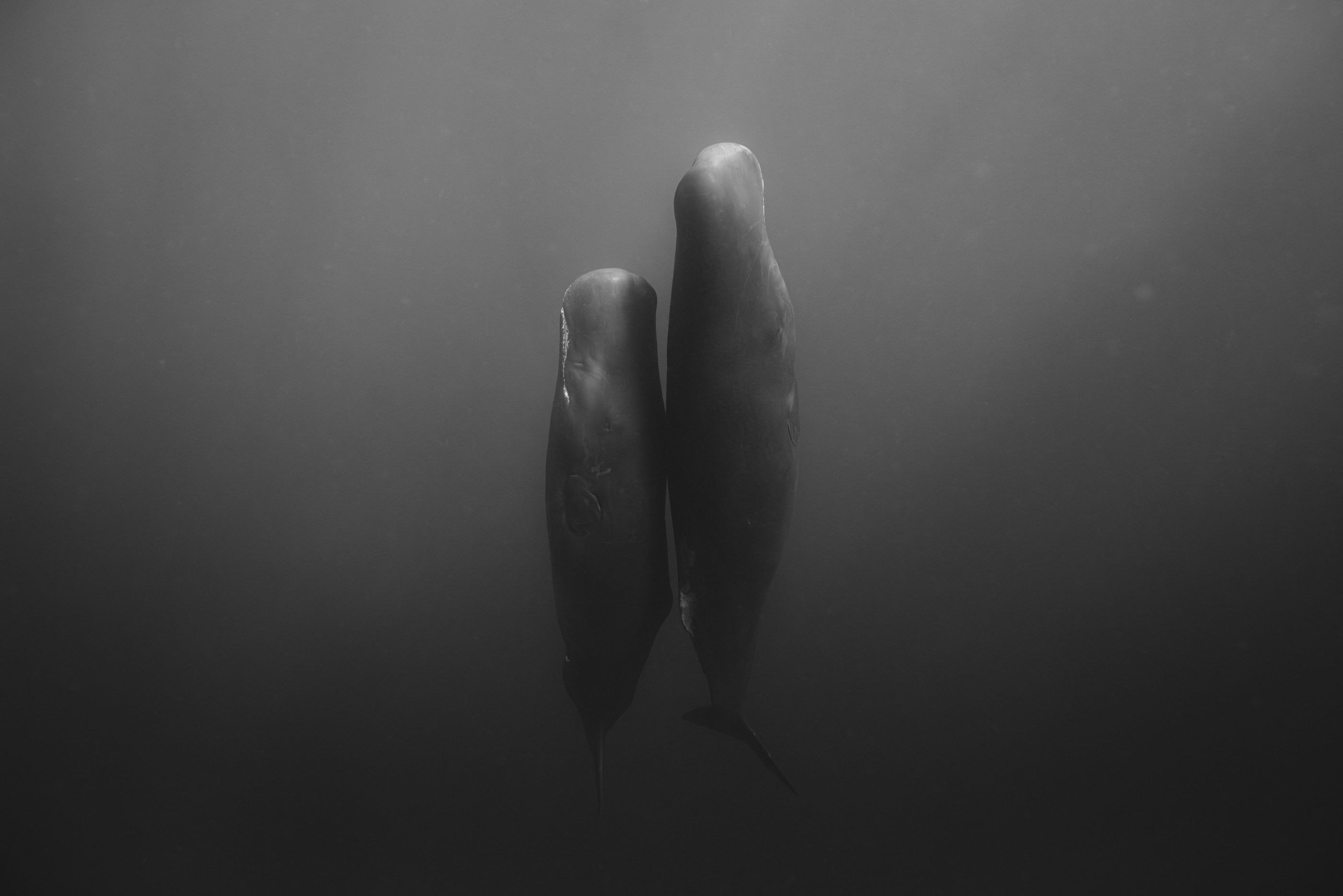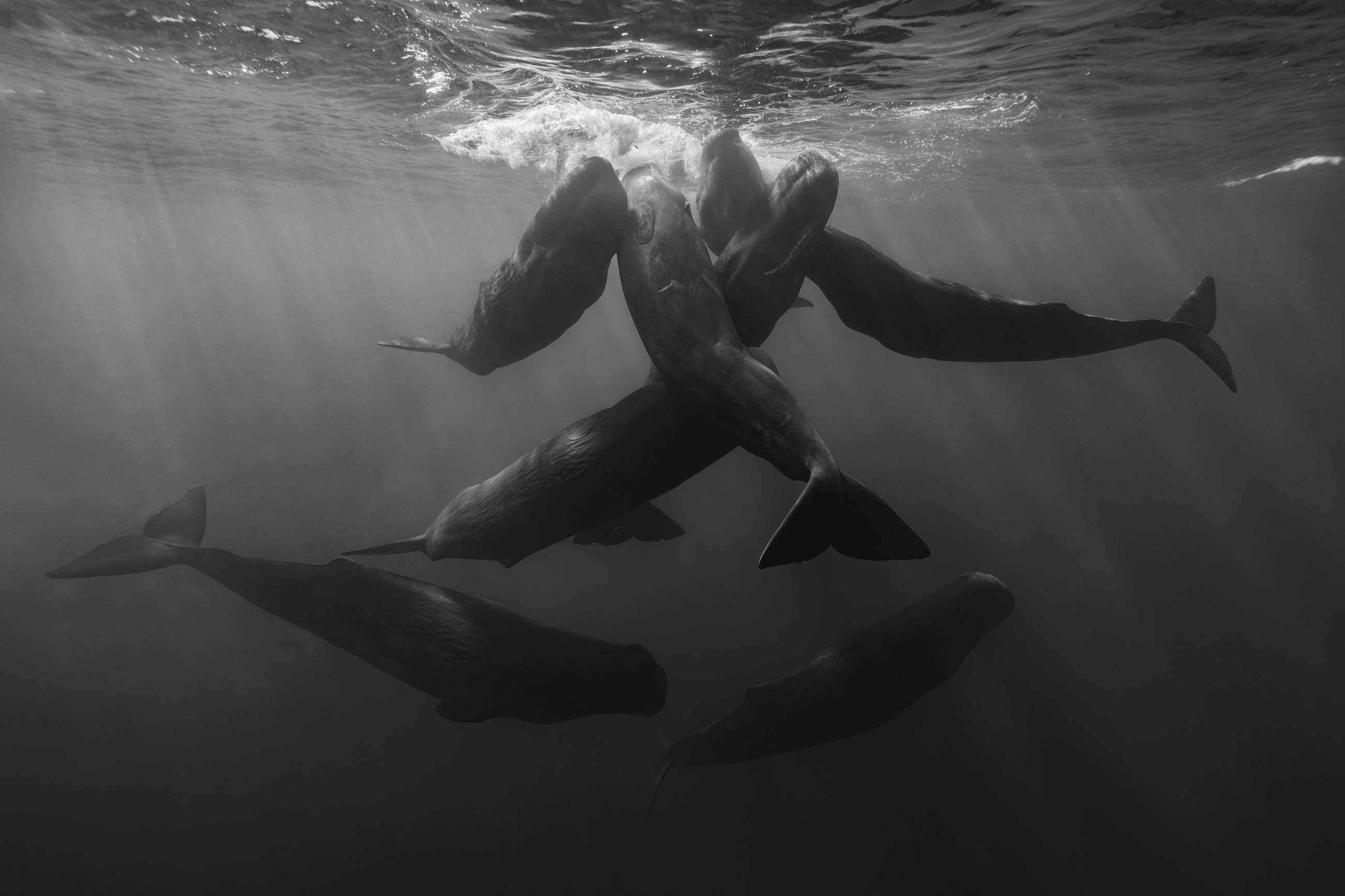June 11, 2025
Dominica
January 2023

Herman Melville’s mid-19th-century novel immortalized the figure of the sperm whale. And while interpretations of the story may vary, this leviathan of the deep represented the raw power and ferocity of nature.
Growing up with little knowledge of the whales themselves, I only imagined the jagged teeth and aggressive nature of the animals based on the story.

The iconic shape of these whales has become synonymous with coastal New England. You don’t have to venture far in Mystic, Cape Cod, or Nantucket before spotting a nod to them—on a restaurant sign, a mural, or a bumper sticker.
Whaling museums, state animal designations, and sculptures all reveal a clear connection between the animal and the region where I grew up. Whether this reflects an acknowledgement of their role in the development of what were once the largest whaling ports in the world, a recognition of their plight today, or just a lingering curiosity about Melville’s marine menace, I decided I had to see firsthand what makes the species so special.
In January 2023, I set off on my first trip to bring my camera underwater. In my true last-minute fashion, the day before my flight, I used a friend’s pool to ensure the camera housing was airtight, get familiar with the gear underwater, and convince myself I was ready for the week ahead.
The obvious reality is that half an hour in the pool would be like jogging once around the block to prepare for a race.
But it was something.

Sperm whales are found throughout the world’s oceans, but there are a few locations where sightings are regular. Dominica is one of those places.
A small, lush island of about 70,000 people, Dominica sits between Guadeloupe and Martinique in the Lesser Antilles. Its waters are home to the Eastern Caribbean Clan of whales, a resident group of between 200 and 300 individuals.
My goal with this visit: capture the essence of an animal far larger than anything I had photographed before.
I’ve often been drawn to what’s different. And these whales are not the ballerinas that humpbacks are—no large fins that help to gracefully dance and twirl in the water.
Sperm whales are more akin to submarines or torpedoes. They are the largest toothed predators in the world, with dark gray bodies measuring up to 60 feet long. Their tiny pectoral fins appear unfit for purpose, often resting flush against their bodies, shaping a streamlined form ready to descend into the depths.
They aren't the singers that humpbacks are either. Sperm whales communicate with clicks—machine-like sequences known as codas. Ongoing research in Dominica suggests that these patterns may be built from a phonetic alphabet, similar to human language.
So much about these animals—from their appearance to their behavior—feels otherworldly. And that, in many ways, was the draw.
.jpg)
When I arrived on the island, I was still recovering from a nasty virus I caught on a recent trip to Japan.
Drugged up on antibiotics and anxious for the day ahead, I remember trying to clear my sinuses that first morning, only to be hit with a shooting pain through my head that caused me to completely lose my balance. I wobbled up the stairs to the car to head for the docks, unsure how the rest of the week would play out.
At first, the sea air seemed to help. But after my first drop into the ocean with the animals, a combination of saltwater intake, boat fumes, and whatever my body was still fighting off caused me to rip out my snorkel and throw up underwater.
A stellar start to the adventure, paying my dues to the sea.
But the sea would end up repaying me.

Most in-water encounters with sperm whales are casual passings as they spend just a brief period at the surface for air. You position yourself ahead of the animals' path, and they swim by, often indifferent.
But my first experiences in the water were special.
"You had two once-a-year days in a row," my guide would later explain.
I was graced with the coveted behaviors of this species: sleeping and socialization.

Sperm whales rest for only around 15 minutes each day, making the odds of witnessing it incredibly slim. They float vertically near the surface, motionless in a scene that feels lifted from a science-fiction film.
These quiet, suspended moments are surreal: the most eerie—yet spectacular—of any wildlife encounter I've experienced.
You're swimming amidst figures larger than any creature you've ever been near.
Still, but very much alive.
Socialization events are the opposite. They are full of movement, energy, and sound.
Members of a family unit—or sometimes even multiple units—meet at the surface, rubbing their heads and bodies together, twirling in an chaotic whale pile.
The ocean fills with clicks as they communicate and bond with one another.
Its far from synchronized.
And that's what makes it perfect.

When you first submerge and look toward your fins, there's just open water below. You hear the clicks, but see nothing.
Then, with a bit of patience, shapes begin to emerge—figures the size of buses.
But these buses are alive.

Their eyes follow you as they pass. They click you inside-out to make sense of you—expressions of the same curiosity you hold for them.
It all seems fanciful. And it’s hard not to feel moved—not physically by the current they carve, but by the experience itself.
This is not an exhibit.
It’s a shared moment in their domain.
A realization that maybe you have far more in common than you first thought.
Melville’s man-versus-beast narrative soon fades into blue.
-EK
8/7/24
